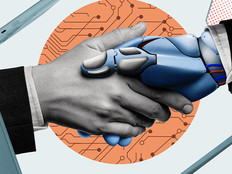How Generative AI Is Easing Shopper Frustration
Beyond predictive analytics; streamlined operations; and quick curation of images, text and video, generative AI is helping with the most essential part of shopping: customer service.
“From slow checkout lanes to absent associates, in-store shoppers are still struggling with the same headaches they’ve always faced,” the IBM Institute for Business Value notes in a 2024 consumer study.
That means that only 9 percent of 20,000 customers in 26 countries report satisfaction with their in-store shopping experiences, the report says. For e-commerce shoppers, the number is only slightly higher, at 14 percent.
RELATED: Technology retailers need to create a frictionless shopping experience.
“Despite the supercomputers in their pockets, consumers must often spend hours searching for the right products, scouring reviews, comparing prices and assessing sustainability,” the report notes.
AI is reducing that friction by giving “consumers the information they need to make better, faster decisions,” it adds.
“When technology is integrated to improve their experiences — not added as an afterthought — brands and retailers can finally deliver the convenience and flexibility consumers have come to expect,” according to the report.
CHECK OUT: Leverage artificial intelligence in customer service to drive business outcomes.
AI Can Approximate Help From a Human
Retailers can also use AI to offer customers assistance from a chatbot that seems almost human, McKinsey senior partner Holger Harreis said in a podcast for the consulting firm.
AI “can suggest things that are based on what you’ve bought before,” he says. It can also produce work in teams where there is a shortage of resources or tight turnarounds. This is particularly true in product design. “Smaller brands now can afford to generate a significant number of designs that before you would have needed to have hundreds of junior designers” to develop, Harreis says.
LEARN MORE: Modern retail technology solutions can help your business.
The Pitfalls of AI Applications
Despite the immense potential of AI, there are a few limitations that retailers should know about. These risks “could be reputational, they could involve intellectual property or they could result from biased results,” Harreis explains. Here are the biggest pitfalls:
- Biased preferences: Levi’s AI partnership, for instance, drew backlash from critics who said the company should hire more diverse models.
- Factual errors and mixups: The tech site CNET used AI to write articles, and The Washington Post, Wired, Columbia Journalism Review and CNN condemned the posts, saying it was a “journalistic disaster” that spread misinformation.
- Large language model hallucinations: “One of the pitfalls of current-state generative AI is that it can create outputs that seem entirely reasonable while also being entirely inaccurate,” notes a recent KPMG report. “It can ‘hallucinate’ facts and make mistakes in reasoning.”
These LLM hallucinations happen because AI engines are trained using publicly available data, not all of which is reliable. To mitigate these risks, organizations should put together “a solid risk management framework encompassing both the generative AI algorithm and the data, of which generative AI requires massive amounts,” Harreis says.
IT leaders can also build a customized data set that is clean and normalized so that the generative AI model has good inputs to pull from. These steps can serve as controls to ensure that the technology is being used ethically and legally.
And as for a larger roadmap of best practices to follow, The National Retail Federation has also formed a working group for its members to monitor these concerns and issue policies.










